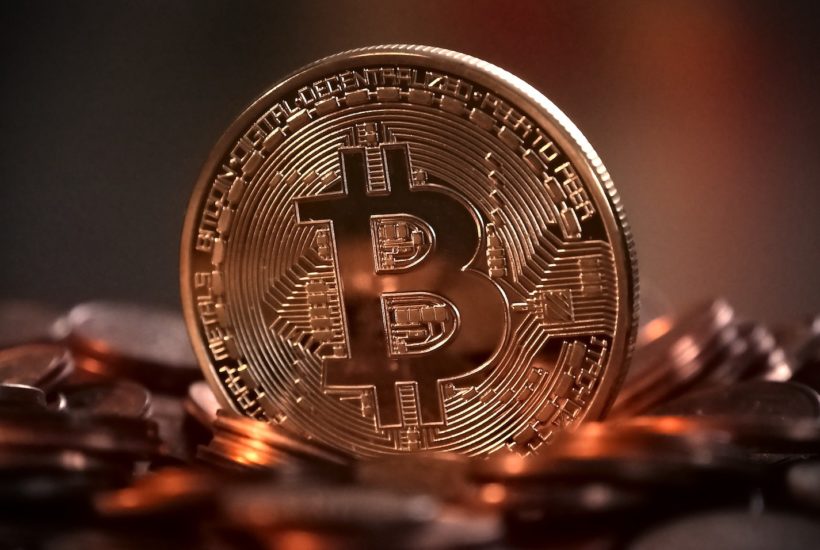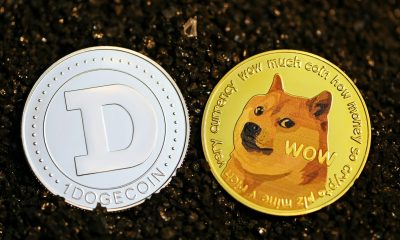Crypto
Bitcoin miners sell more cryptocurrencies than they generate
According to the on-chain analysis portal ByteTree, Bitcoin miners sold 11% more BTC last week than they generated in the same period. ByteTree’s analysis showed that 6,608 BTC were sent for the first time in the last 7 days. In the same period, only 5,888 BTC were generated. As a result of the Bitcoin Halving miners have had to continue mining under increased difficulty.

Bitcoin Halving has been over for several weeks now and the effects are still being felt. This is not only about the time it takes to find a block, which is still above the average of 10 minutes per block, but also about the miners, who currently seem to be selling more BTC than they generate.
What exactly is at stake in this story, and what effects this may have on the Bitcoin price, it will be clarified in this article.
If you want to find out the latest news in the crypto sector and to read the most important business headlines in the world, download the Born2Invest mobile app.
Bitcoin Miners currently sell more than they earn
According to the on-chain analysis portal ByteTree, Bitcoin miners sold 11% more BTC last week than they generated in the same period. The company regularly analyses the movements of so-called coinbase transactions to find out whether Bitcoin miners are currently suffering from selling pressure or not. A Coinbase transaction represents the block reward that the miners receive for finding a valid block. That is the birthplace of the new Bitcoins, so to speak.
According to ByteTree’s analysis, 6,608 BTC were sent for the first time in the last 7 days. In the same time only 5,888 BTC were generated. This is the equivalent of 12.2% more.
A ByteTree spokesman said: “A miner’s wallet can belong to an individual, a company or a mining pool. If the coins are generated by the miners and appear in the miner’s wallet, they are counted as ‘generation’. These coins can then be in the miners’ wallets for days, months, years, or forever. It is up to the owner of the wallet to decide when to move the coins.”
He continued: “If these coins are generated by a miner pool, the coins are either distributed to the pool participants (i.e. paid in BTC) or sent to an exchange at a certain time to cover the FIAT costs of the operation.”
Is the miner surrender already underway?
It is currently difficult to speak of a Bitcoin miner surrender. In recent weeks, the hash rate has already fallen dramatically, indicating that some miners have been cut out. Whether the respective miners have only briefly stopped operations until the difficulty adjusts downwards again is not yet entirely clear. It will be experienced at the latest with the next difficulty adjustment in 3 days. Current estimates assume that the difficulty rate will fall by a further 6-10%.
A Twitter user has also picked up the statistics of ByteTree that miners might be facing a final surrender. He also said that it is a strong sign that even though miners are currently selling more than they generate, the price may stay above the $9,000 mark.
Miners do not give up
Thomas Heller, the Global Business Director at F2Pool (one of the largest Bitcoin mining pools), said that miners are more likely to relocate or sell their machines to areas where electricity is cheaper than to abandon mining altogether. Even in times of increased difficulty and the threat of unprofitability.
“Since it is no longer profitable to operate the older machines at the price of electricity in China, Canada, the U.S. or Europe, they eventually end up in other places like Kazakhstan, Russia, the Middle East and South America,” Heller said.
So far, there have been very few cases of mining companies going out of business in 2020.
Aftereffects of the Bitcoin Halving
Due to the Bitcoin Halving there have been some changes in the last weeks. The hashrate has dropped by more than 30%. As a result, miners have had to continue mining under increased difficulty. As a result, blocks were found more slowly and fewer transactions could be made at the same time. That increased the transaction fees and automatically the miners’ income. After the next difficulty adjustment the situation should normalize again.
At this point, it should be said that one does not know exactly whether the moved bitcoins by the miners were really sold or only moved to other wallets. Therefore, it is not possible to say here conclusively whether miners are currently under such a high pressure to sell that they have to sell their saved stocks of Bitcoins.
However, the Bitcoin price does not seem to care. This could of course also be due to the increased demand that we are currently experiencing from private and institutional investors. It remains to be seen how the situation will develop after the next Difficulty Adjustment in a few days and how the Bitcoin price will react.
__
(Featured image by MichaelWuensch via Pixabay)
DISCLAIMER: This article was written by a third party contributor and does not reflect the opinion of Born2Invest, its management, staff or its associates. Please review our disclaimer for more information.
This article may include forward-looking statements. These forward-looking statements generally are identified by the words “believe,” “project,” “estimate,” “become,” “plan,” “will,” and similar expressions. These forward-looking statements involve known and unknown risks as well as uncertainties, including those discussed in the following cautionary statements and elsewhere in this article and on this site. Although the Company may believe that its expectations are based on reasonable assumptions, the actual results that the Company may achieve may differ materially from any forward-looking statements, which reflect the opinions of the management of the Company only as of the date hereof. Additionally, please make sure to read these important disclosures.
First published in CRYPTO MONDAY, a third-party contributor translated and adapted the article from the original. In case of discrepancy, the original will prevail.
Although we made reasonable efforts to provide accurate translations, some parts may be incorrect. Born2Invest assumes no responsibility for errors, omissions or ambiguities in the translations provided on this website. Any person or entity relying on translated content does so at their own risk. Born2Invest is not responsible for losses caused by such reliance on the accuracy or reliability of translated information. If you wish to report an error or inaccuracy in the translation, we encourage you to contact us.

-

 Africa23 hours ago
Africa23 hours agoDamane Cash and FMSCD Partner to Enable Cash Advance in Exchange Offices
-

 Africa2 weeks ago
Africa2 weeks agoBantuHub and L’Archer Group Partner to Invest €1 Million in Congolese Startups
-

 Business1 week ago
Business1 week agoThe TopRanked.io Weekly Digest: What’s Hot in Affiliate Marketing [Super Partners Review]
-

 Business18 hours ago
Business18 hours agoThe TopRanked.io Weekly Digest: What’s Hot in Affiliate Marketing [BullionVault Affiliates Review]























